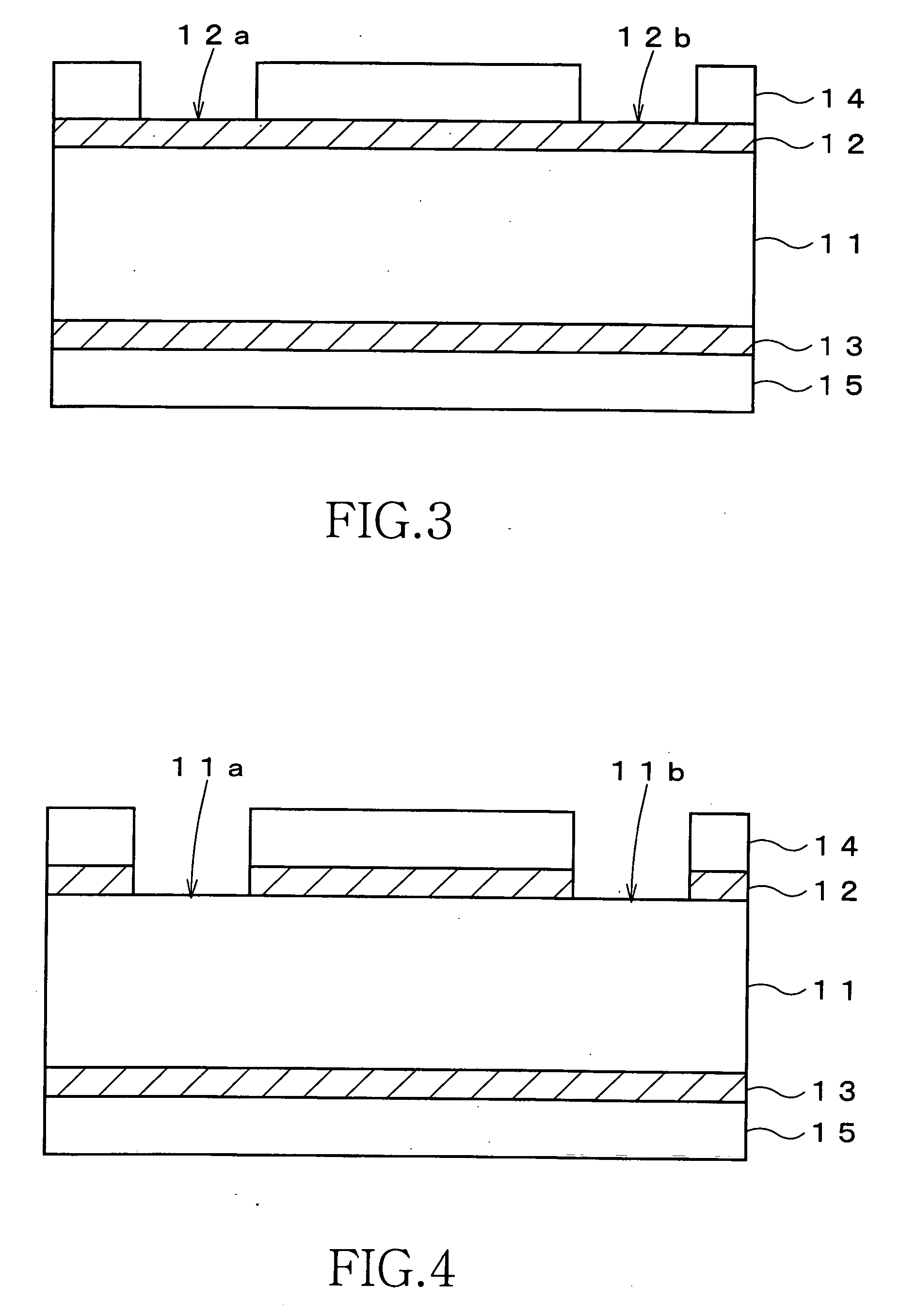Multilayer substrate and manufacturing method thereof
a technology of multi-layer substrates and manufacturing methods, applied in the field of multi-layer substrates, can solve the problems of difficult to clearly identify the boundary between the insulating layers, and achieve the effects of reducing the occurrence of warpage, reducing the variation in the thickness of the insulating layer, and improving the pattern accuracy
- Summary
- Abstract
- Description
- Claims
- Application Information
AI Technical Summary
Benefits of technology
Problems solved by technology
Method used
Image
Examples
first embodiment
[0161] A method of manufacturing a multilayer substrate according to the present invention is applicable to both of a “core substrate” and a “build-up layer” to be provided on the core substrate, which constitutes the multilayer substrate. First, the case of applying the method of manufacturing a multilayer substrate according to the present invention to a “core substrate” will be described with reference to schematic cross-sectional views in FIG. 1 to FIG. 16.
[0162] A core substrate 10 is prepared to begin with (FIG. 1). The core substrate 10 before processing includes an insulating layer 11, and conductive layers 12 and 13 respectively formed on both surfaces of the insulating layer 11. The insulating layer 11 serves to ensure overall mechanical strength upon fabrication of a multilayer substrate. Although the material of the insulating layer 11 is not particularly limited, it is preferable to use a core made of a glass cloth, Kevlar, a resin cloth such as liquid crystal polymer, ...
second embodiment
[0193] Next, a method of manufacturing a multilayer substrate according to the present invention will be described in detail.
[0194] The method of manufacturing a multilayer substrate according to this embodiment is also applicable to both of a “core substrate” constituting a multilayer substrate and a “build-up layer” to be provided on the core substrate. In the following, the case of applying the method of manufacturing a multilayer substrate according to this embodiment to a “build-up layer” will be described with reference to schematic cross-sectional views in FIG. 38 to FIG. 51. Note that the basic processes for the core substrate are the same as the basic processes for the build-up layer as described in the first embodiment. Therefore, this embodiment will only describe application to the “build-up layer”, and will omit a description of application to the core substrate. In the meantime, the same constituents as those described in the first embodiment will be designated by the ...
third embodiment
[0209] Next, the present invention will be described in detail.
[0210] A method of manufacturing a multilayer substrate according to this embodiment is also applicable to both of a “core substrate” constituting a multilayer substrate and a “build-up layer” to be provided on the core substrate. First, the case of applying the method of manufacturing a multilayer substrate according to this embodiment to a “core substrate” will be described with reference to schematic cross-sectional views in FIG. 52 to FIG. 62.
[0211] First, similarly to the first embodiment, a core substrate 10 is prepared and dry films 14 and 15 made of a photosensitive material are respectively attached to both surfaces of the core substrate 10 (FIG. 1 and FIG. 2). In this way, substantially the entire surfaces of conductive layers 12 and 13 are covered with the dry films 14 and 15. Thereafter, the dry films 14 and 15 are patterned by exposure and development processes to expose portions the conductive layers 12 an...
PUM
| Property | Measurement | Unit |
|---|---|---|
| Length | aaaaa | aaaaa |
| Length | aaaaa | aaaaa |
| Thickness | aaaaa | aaaaa |
Abstract
Description
Claims
Application Information
 Login to View More
Login to View More - R&D
- Intellectual Property
- Life Sciences
- Materials
- Tech Scout
- Unparalleled Data Quality
- Higher Quality Content
- 60% Fewer Hallucinations
Browse by: Latest US Patents, China's latest patents, Technical Efficacy Thesaurus, Application Domain, Technology Topic, Popular Technical Reports.
© 2025 PatSnap. All rights reserved.Legal|Privacy policy|Modern Slavery Act Transparency Statement|Sitemap|About US| Contact US: help@patsnap.com



